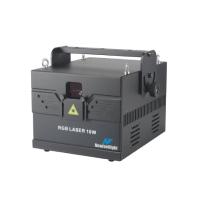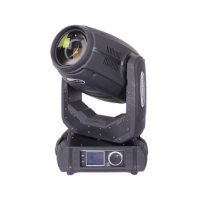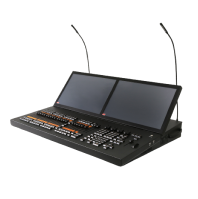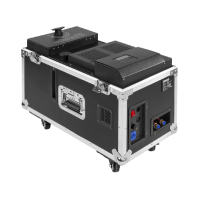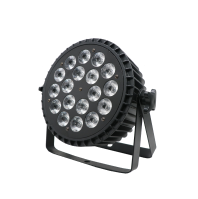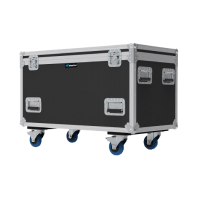Table of Contents
- What Is ILDA?
- Understanding ILDA Lasers and the ILDA Cable
- Laser Show Projectors – The Core of Every Laser System
- The Optical Scanning System (Galvos/Scanners)
- Laser Modules – The Light Source Behind the Show
- Color and Wavelength Standards
- Why These Terms Matter for Professionals
- About Newfeel Light
In the professional stage lighting industry, laser systems are an essential tool for creating breathtaking visual effects. However, newcomers — and even seasoned production engineers — often encounter technical terms like ILDA, galvos, or OPSL without clear definitions.
This guide by
Newfeel Light provides a complete overview of common laser light show definitions, explaining what each term means, how it fits into a laser show system, and why it matters for lighting professionals, event producers, and equipment buyers.
What Is ILDA?
ILDA stands for International Laser Display Association — the global trade organization that defines the technical and safety standards for the entertainment laser display industry.
ILDA’s work covers everything from regulatory advocacy to professional education, ensuring that laser show professionals and government agencies maintain a shared understanding of safety and performance standards.
Most importantly, ILDA sets the technical specifications for the ILDA connector, which allows laser projectors and control systems from different manufacturers to work seamlessly together.
For professionals, any ILDA-certified laser system ensures compatibility, safety compliance, and reliable performance — all crucial for event and stage productions that demand consistency.
Understanding ILDA Lasers and the ILDA Cable
An ILDA laser is any laser projector that can be controlled using the ILDA standard connection. The ILDA cable uses a DB-25 “D”-shaped connector with 25 individual pins. This connector transmits analog signals between the laser controller (such as software or console hardware) and the laser projector.
The reason ILDA chose the DB-25 connector is its reliability and universal availability. These connectors and cables can be sourced easily from electronics suppliers, which makes ILDA-based systems accessible and serviceable worldwide.
In practical terms, if your projector includes an ILDA port, it can communicate directly with a Digital-to-Analog Converter (DAC), allowing you to create and play complex laser animations, beam shows, and stage graphics with precision.
Laser Show Projectors – The Core of Every Laser System
A laser projector is the primary hardware responsible for producing the visible laser effects seen in entertainment and stage environments.
Most professional laser show projectors integrate:
Laser modules (light sources — typically Red, Green, and Blue)
Optical scanning systems (galvanometer mirrors)
Control electronics (to interpret ILDA, DMX, or network commands)
Together, these components generate 2D and 3D visual content — from sharp logos to immersive volumetric effects.
Laser projectors can operate in multiple control modes, depending on setup requirements.
1. ILDA-Controlled Laser Projectors
These projectors are controlled via ILDA hardware and software systems. By connecting your DAC interface (such as an FB3QS or FB4) to the projector using an ILDA cable, users gain precise control over every detail of the show.
FB3QS: A USB-based ILDA controller that connects to your computer and outputs analog signals to the laser via ILDA.
FB4: A network-based ILDA interface that connects via CAT5 or CAT6 cable, offering network flexibility and multi-laser synchronization.
With ILDA-based systems, lighting professionals can design, program, and trigger laser content directly from software, achieving exact control over color mixing, brightness, and scanning speed.
2. Integrated Media Server Laser Projectors
Modern high-end systems now include built-in media servers. These advanced laser projectors contain all necessary control electronics internally — no external DAC or ILDA cable required.
They can operate using multiple communication protocols such as DMX512, ArtNet, ILDA-over-network, and standalone SD card playback. This approach streamlines complex installations, reducing hardware requirements and cabling while maintaining professional-grade control.
For touring shows, large-scale events, or outdoor installations, integrated projectors simplify logistics and improve reliability — a growing trend across the
professional stage laser market.
The Optical Scanning System (Galvos/Scanners)
The optical scanning system — often called galvos or scanners — is the mechanical heart of any laser show system.
It’s composed of two precision motors aligned on X and Y axes, each fitted with a small mirror that reflects and directs the laser beam. The scanners receive analog control signals from the laser controller, allowing them to move back and forth at incredible speeds, “drawing” the desired image or pattern.
When both axes work in coordination, they can produce 2D or 3D animations — from simple shapes to complex vector-based imagery.
Key terms:
Galvo – Refers to the galvanometer motor itself.
Scanner – Refers to the complete optical scanning mechanism.
Servo amplifier – The electronic circuit that drives and stabilizes the scanner’s motion.
Professional laser show projectors from Newfeel Light often use scanners rated at 30Kpps or higher, ensuring smooth, flicker-free motion for high-resolution vector content.
Laser Modules – The Light Source Behind the Show
The laser module is the engine that produces the beam. Historically, early systems used gas lasers like Argon or Helium-Neon tubes, which required enormous power and cooling. Over time, this evolved into DPSS (Diode-Pumped Solid-State) lasers, which used powerful infrared diodes focused through crystals like Nd:YAG to generate specific visible wavelengths.
Today, the industry standard has shifted to diode lasers — compact, efficient, and long-lasting sources of red, green, and blue light. Diode technology allows for higher reliability and better energy efficiency, making it ideal for portable projectors and large-scale systems alike.
At the premium end of the market, some systems employ OPSL (Optically Pumped Semiconductor Laser) modules. OPSL technology provides superior beam quality and lower divergence, producing tighter, brighter beams. These are typically used in high-end outdoor or stadium-scale shows.
A professional RGB laser projector combines these modules to produce full-spectrum color mixing. With proper analog modulation, millions of color variations can be achieved — perfect for creative lighting professionals who demand precision.
Color and Wavelength Standards
Every laser color corresponds to a specific wavelength, measured in nanometers (nm):
Red: 638 nm
Green: 520 nm
Blue: 450 nm
Additional channels: Can include amber, cyan, or white
A standard RGB setup with analog modulation can blend these wavelengths to generate smooth transitions and over 16 million color combinations, depending on your laser control software.
Why These Terms Matter for Professionals
For lighting designers, production engineers, and integrators, understanding laser light show terminology is essential. Each term — ILDA, galvo, OPSL, or module — affects how your system performs and integrates with other lighting technologies such as DMX, ArtNet, or media servers.
As event design continues evolving, more venues are merging laser systems with LED, video, and stage lighting for synchronized multimedia shows. Knowing these definitions ensures your setup remains efficient, compliant, and adaptable to modern control networks.
About Newfeel Light
Newfeel Light specializes in professional-grade laser show projectors, scanning systems, and RGB diode modules built for reliability and precision. From touring productions and festivals to corporate events and architectural displays, Newfeel provides lighting professionals with the laser technology they need to push creativity further.
Our systems are designed with ILDA, DMX512, and ArtNet compatibility, ensuring smooth integration with any existing lighting rig. Whether you’re building your first show rig or upgrading to advanced multi-laser setups, Newfeel Light offers performance that professionals trust.
Final Thoughts
Understanding
laser light show definitions isn’t just about technical vocabulary — it’s about communication and control. Each of these terms represents a crucial element in the design, safety, and operation of professional entertainment laser systems.
By mastering this language, you can make more informed equipment choices, improve your show quality, and ensure your production remains at the forefront of stage lighting innovation.








